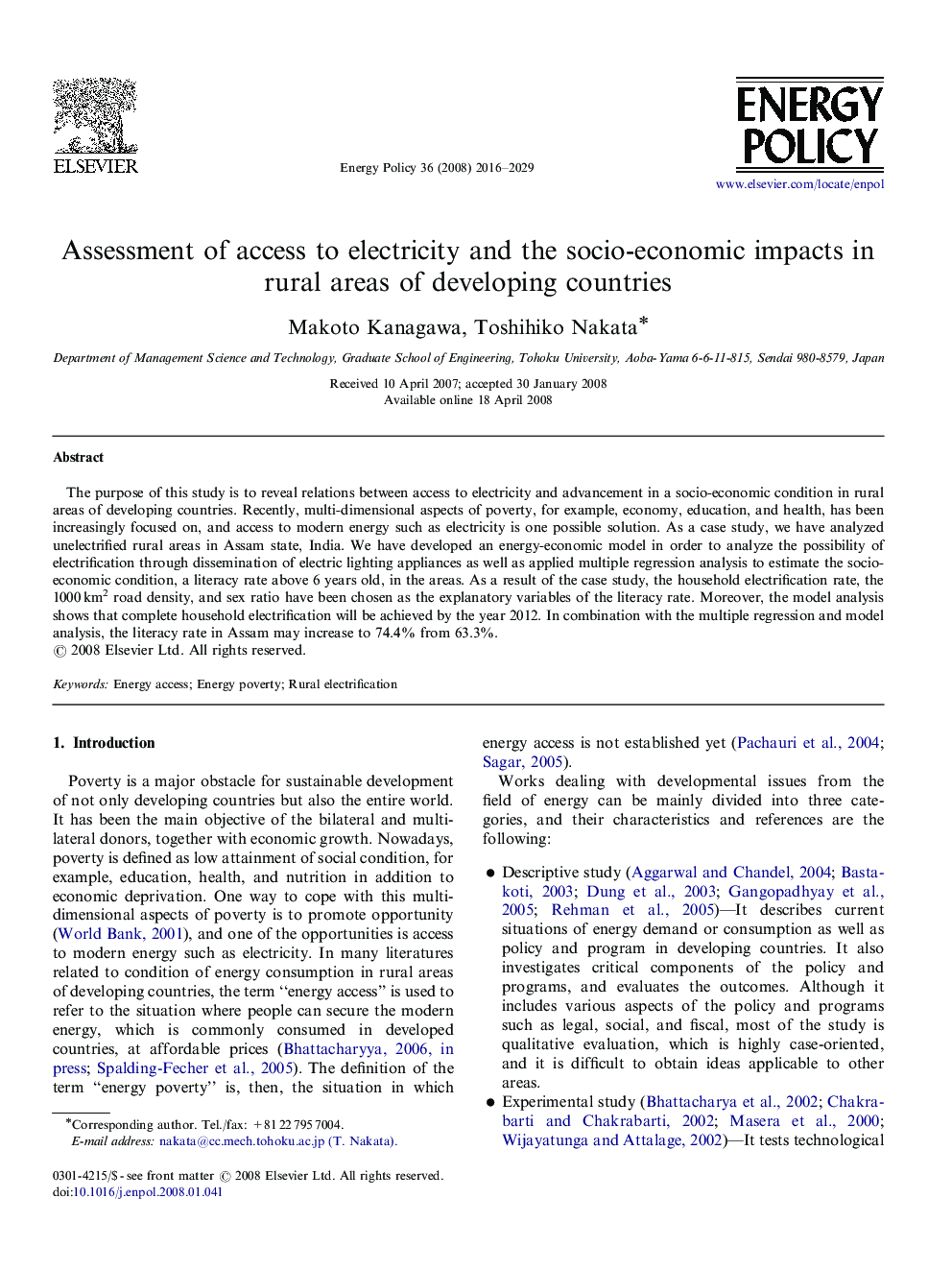| Article ID | Journal | Published Year | Pages | File Type |
|---|---|---|---|---|
| 993985 | Energy Policy | 2016 | 14 Pages |
The purpose of this study is to reveal relations between access to electricity and advancement in a socio-economic condition in rural areas of developing countries. Recently, multi-dimensional aspects of poverty, for example, economy, education, and health, has been increasingly focused on, and access to modern energy such as electricity is one possible solution. As a case study, we have analyzed unelectrified rural areas in Assam state, India. We have developed an energy-economic model in order to analyze the possibility of electrification through dissemination of electric lighting appliances as well as applied multiple regression analysis to estimate the socio-economic condition, a literacy rate above 6 years old, in the areas. As a result of the case study, the household electrification rate, the 1000 km2 road density, and sex ratio have been chosen as the explanatory variables of the literacy rate. Moreover, the model analysis shows that complete household electrification will be achieved by the year 2012. In combination with the multiple regression and model analysis, the literacy rate in Assam may increase to 74.4% from 63.3%.
